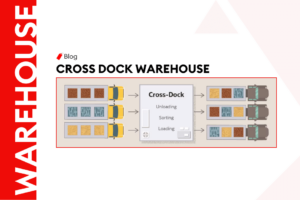Home » Services » Door to Door » IMEA » Oman
Unlock seamless logistics solutions to foster dynamic trade growth between the UAE and Oman.
UAE - Oman
Overview
Discover comprehensive information about Oman’s major airports and seaports, detailing their cargo capabilities and logistics infrastructure.
Airport Details
The airports supporting cargo operations in Oman are:
- Muscat International Airport
Airport Code: MCT
Cargo Handling Capacity: 350,000 tonnes/year
Note: Equipped with advanced cold-chain solutions, customs clearance, and 24/7 cargo handling services.
- Salalah International Airport
Airport Code: SLL
Cargo Handling Capacity: 200,000 tons/year
Note: Features dedicated freight terminals, temperature-controlled storage, and quick transit services.
Sea Port Deatails
Major seaports supporting cargo operations in Oman include:
- Port of Sohar
Location: Sohar, Sultanate of Oma
Port Code: OMSOH
Number of Berths: 11
Cargo Handling Capacity: 2 million TEU/year
Note: A prime deep-sea port with modern infrastructure, providing quick customs processing and access to major highways.
- Port of Salalah
Location: Dhofar Governorate
Port Code: OMSLL
Number of Berths: 6
Cargo Handling Capacity: 4.5 million TEUs/year
Note: Strategically located on the global shipping route, offering direct access to Asia, Europe, and Africa.
- Sultan Qaboos Port
Location: Muscat
Port Code: OMOPQ
Number of Berths: 39
Cargo Handling Capacity: 2000000 thousand tons/year
Note: Ideal for handling smaller vessels, with efficient warehousing and distribution facilities.
- Duqm Port
Location: Al Wusta
Port Code: OMDQM
Number of Berths: 7
Cargo Handling Capacity: 5 million tonnes annually
Note: Emerging logistics hub with integrated special economic zone and dry dock facilities.
Frequently Asked Questions (FAQ)
What are the major airports and seaports in Oman that support cargo operations?
Major airports include Muscat International Airport with a capacity of 350,000 tonnes/year and Salalah International Airport with 200,000 tons/year capacity. Key seaports are Port of Sohar with a capacity of 2 million TEU/year, Port of Salalah handling 4.5 million TEUs/year, Sultan Qaboos Port, and Duqm Port with a capacity of 5 million tonnes annually.
What documents are required for importing goods into Oman?
Essential documents for importing into Oman include the Commercial Invoice, Certificate of Origin, Packing List, Bill of Lading/Airway Bill, Import License (for restricted items), Customs Declaration Form, and Insurance Certificate.
What are the customs duties and VAT rates in Oman and the UAE?
In both Oman and the UAE, the standard customs duty rate is 5% for most imported goods. VAT is set at 5% in both countries, with specific exemptions for items like basic food products, healthcare, and education.
What are the restricted or licensed goods for trade between the UAE and Oman?
Restricted or licensed goods include alcoholic beverages, pharmaceutical products, chemical substances, defense and security equipment, religious materials, broadcasting equipment, animal products, and agricultural products. These goods require special permits, licenses, or certifications such as veterinary and phytosanitary certificates.
What are the leading import and export commodities between the UAE and Oman?
Oman's leading import commodities include machinery and equipment, vehicles and spare parts, electrical appliances, mineral fuels and oils, and iron and steel. The UAE's top imports are electronics, food and beverages, automobiles, gold and precious metals, and pharmaceutical products. Oman primarily exports crude oil and petroleum products, natural gas, minerals, fish and seafood, and dates and agricultural products, while the UAE exports petroleum products, aluminum and metal products, electronics, plastics, and textiles and garments.
Related Articles
Anything you need, We’re here to Help

Chat With Us
Effortlessly schedule your next shipment with us for reliable and timely delivery.

Request a Quote
Receive a personalized shipping quote that meets your specific logistic needs.









